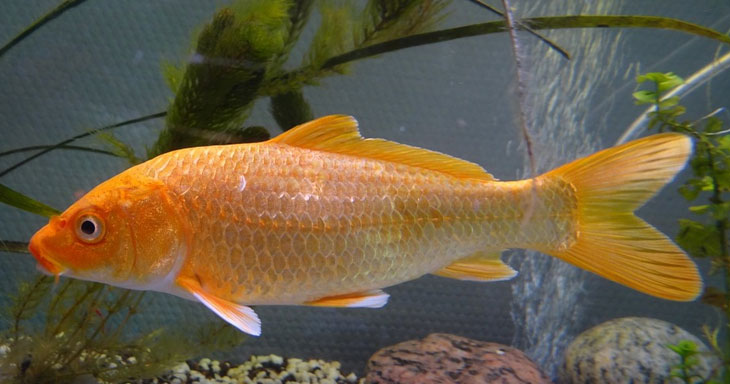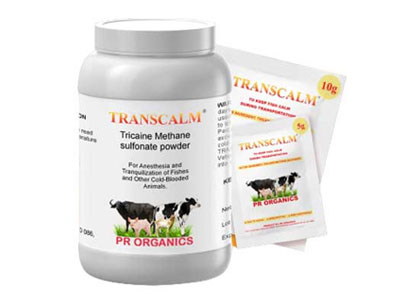Transcalm

Usage
Transcalm is used for the temporary immobilization of fish and other aquatic cold-blooded animals. It has long been recognized as a valuable tool for the proper handling of these animals during Transpot, Manual Spawning (fish stripping), Weighting, Measuring, Marking, Surgical operation, Photography and Research. Highly recommended during the Transportation of Fish.
Dosage During Transportation
- Add 5gm for 300 It water
- Add 10gm for 600 It water (or) as advised by an Aqua Consultant Depends upon the usage
(Actual dosage: 15 to 66 ppm for 6 to 48 hours to sedate fish during transport.)
Note :
Because the efficacy of most anesthetics are affected by species, body size, the density of fish bath, as well as water quality (e.g., hardness, temperature, or salinity), it isimperative that preliminary tests be performed with small numbers of the fish to determine the optimal dosage and exposure time.
Withdrawal Period :
It is approved for use on food fish, and a 21-day withdrawal period is required before fish are consumed.

Why proper anesthesia is required? :
- According to the Animal Welfare vertebrates may not be transported or Killed without effective elimination of pain perception (anesthesia). It is intended for the temporary immobilization.
- To reduce stress in fish, any handling induces tremendous stress in fish. External signs of stress include ataxia and tachypnes (hyperventilation).
- To reduce pain, the question as to whether fish have the ability to centrally process pain has been the subject of discussion for more than two decades. However, fish do express nociceptors and opioid receptors (mu, delta, kappa), and B-endorphins have been found in salmon 106.
Why transcalm is an ideal Anesthetic?
- It Provides fully reversible and controlled loss of consciousness without causing any mortality.
- It is very safe for the aquatic animal and the operator.
- It causes minimal changes in physiology, it maintains homeostasis throughout the entire procedure.
- It minimizes stress, pain and suffering to the animal.

